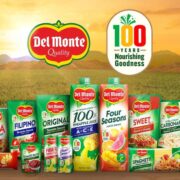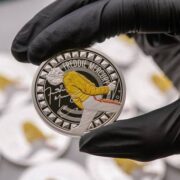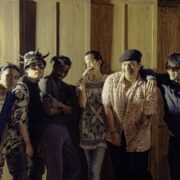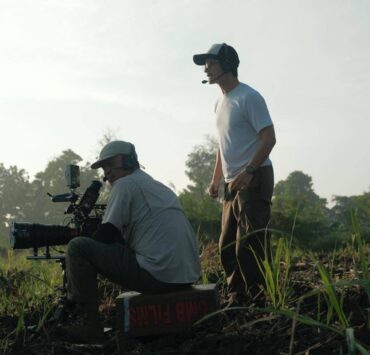Recreating the taste of memories

Rob Villarcabral is a storyteller of cuisine and culture—a journalist, filmmaker, chef, and researcher behind Histolinarya Collective. His goal? To revive forgotten Filipino dishes and traditions.
Rediscovering bygone recipes, he says, isn’t about nostalgia but about grounding the future.
And he believes Filipino food needs no elevation, as it is already beautiful in its own right. Each of our dishes reflects local nuance, adaptation, and identity, he adds.
Bringing back the simple joys
Villarcabral and his brand Histolinarya focus on preserving heirloom and endangered Filipino foods by reviving them through short, cinematic films on social media, storytelling, seminars, and by recreating dishes that now exist mostly in memory.
Does anyone remember Butterfly iced tea—the signature drink of the Butterfly Club in Diliman, Quezon City? Created by Ángel “Pappy” Nepomuceno, son of filmmaker José Nepomuceno and father of bowling legend Paeng Nepomuceno, it was as iconic as the place itself.
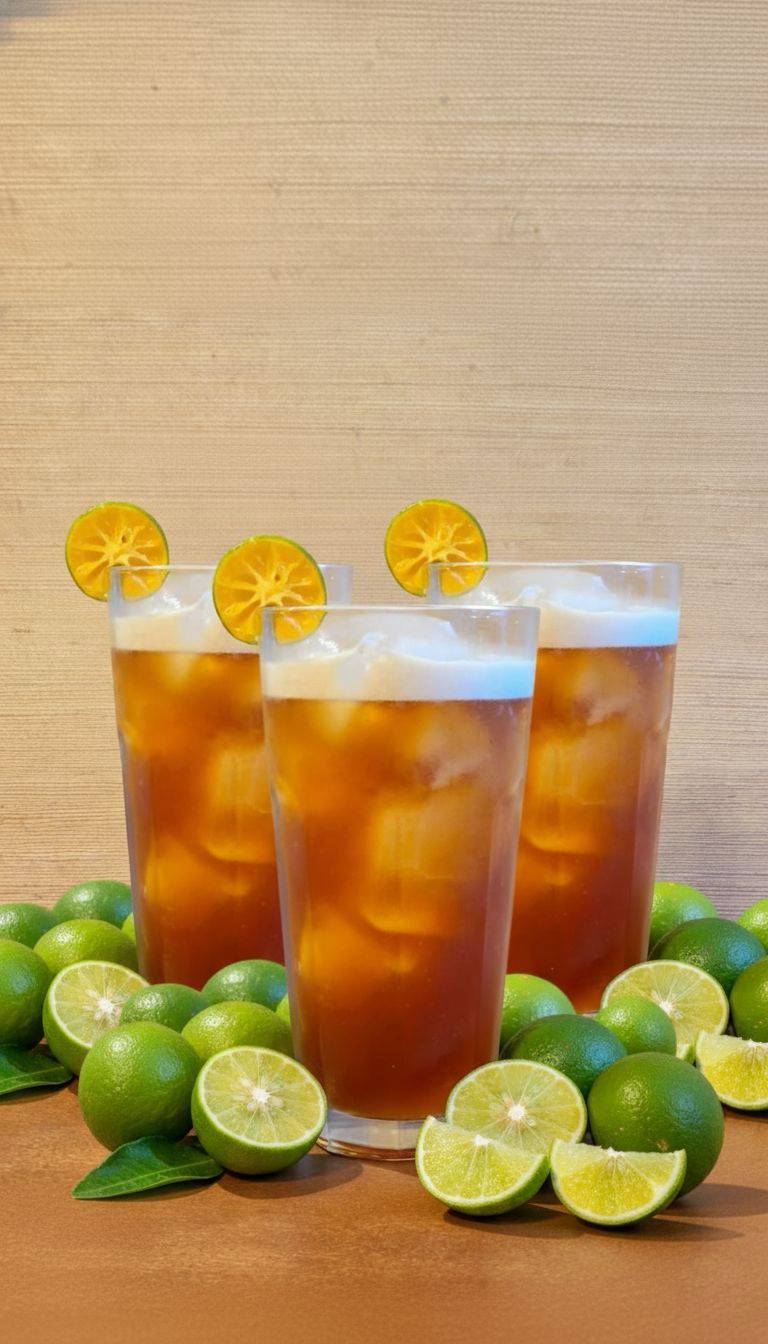
By day, the club was a golfers’ retreat. By night, it was a vibrant haven for Manila’s 1960s folk rock scene. In the middle of it all was that tall, refreshing glass of iced tea—cool, comforting, and unforgettable.
When the club closed in the early ’70s, the drink lived on in Pappy’s Greenlanes Bowling Alley and later in supermarkets as a bottled concentrate—a taste of memory that became a party staple before quietly fading away.
Villarcabral, through his video post, brought it back to life. He lovingly reconstructed it so we may sip, reminisce, and relive the golden old days once more.
He also brought Santolada to light—a refreshing pampalamig; a blast from the past made with water infused with santol rind and pulp, sweetened to taste. For Villarcabral, it’s more than nostalgia. It’s about ensuring that the younger generation rediscovers these humble, homegrown flavors that once defined our simple joys.
Halú-halò, then and now
His extensive research on halú-halò earned recognition at the inaugural DGF Short Video Awards, where he won third place for his entry “Sweet Inheritance: The Halú-Halò Chronicles.”
Halú-halò began in Japan’s Heian period, when ice was stored in himuro huts for the imperial court in Heian-kyō (Kyoto). Nobles enjoyed kezurihi—scraped ice with kudzu sap—as a luxury item for centuries. By the late Edo period, as Yokohama opened to trade, entrepreneur Kahē Nakagawa, inspired by imported Boston ice, began local production. In 1862, he opened Korimizu-ya, Japan’s first shaved ice shop, sparking a summer craze that evolved into kakigōri—the colorful, syrup-topped treat beloved today.
Around the same time, ice reached Manila through German expatriate Julius “Julio” Witte in 1850, leading to the city’s first ice plant two decades later. By the 1880s, sorbetes vendors roamed the streets, and American-era parlors like Clarke’s popularized ice cream made with evaporated milk.
Japanese migrants in Manila soon introduced kakigōri-style desserts made with red beans, ice, and milk, locally called “monggo con hielo.” By the 1920s, monggo-ya parlors in Quiapo’s Quinta Market offered sabá, maíz, and garbanzo con hielo. The fusion of Japanese kakigōri, local con hielo sweets, and Spanish-style fruits birthed what we know today as halú-halò. Early versions were simple—beans, bananas, kamote, and corn in syrup over ice and milk—but still irresistibly refreshing.
After World War II, despite anti-Japanese sentiment, halú-halò thrived. Filipino parlors like Little Quiapo and The Aristocrat reimagined a more luxurious interpretation with makapunô, ube halaya, leche flan, and ice cream.
Shaped by migration, perfected by Filipino creativity, and born from Japan’s imperial ice—halú-halò endures as a celebration in every glass.
Beyond research, Villarcabral conducts workshops and crafts specialty products like banana ketchup and binurong paho. Through his devotion, he brings us back to the flavors of our youth and to the tastes that shaped who we are.
Rob Villarcabral’s work inspires pride in our rich culinary heritage and gratitude for those who keep our food stories alive. Follow @histolinaryacollective to know more
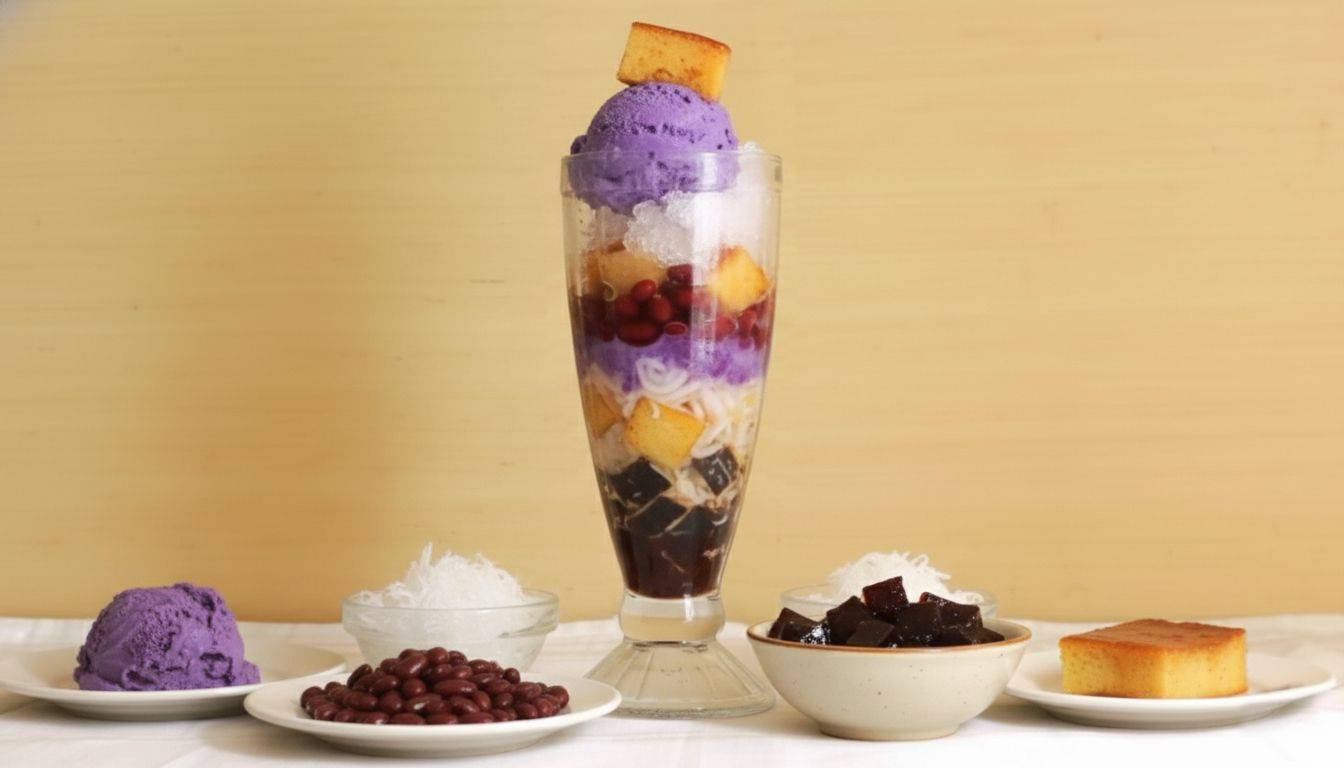
Quiapo-style Halú-halò
Villarcabral’s halú-halò recipe brings us back to Quiapo’s Quinta Market in the 1920s where the beloved panghimagas was served like this:
Ingredients
1 heaping tsp minatamís-na-munggó
1 heaping tsp minatamís-na-sabá
1 heaping tsp minatamís-na-garbansos
1 heaping tsp minatamís-na-kamote
1 heaping tsp shucked corn kernels
(optional)
1 heaping tsp fresh ripe papaya chunks
(optional)
1 heaping tsp gulaman cubes (optional)
Shaved ice
Evaporated milk
Procedure
In a short 8-ounce drinking glass, layer a teaspoon each of the ingredients.
Generously top with shaved ice and finish with a splash of evaporated milk. This early version pre-dates the modern parfait style halú-halò.


